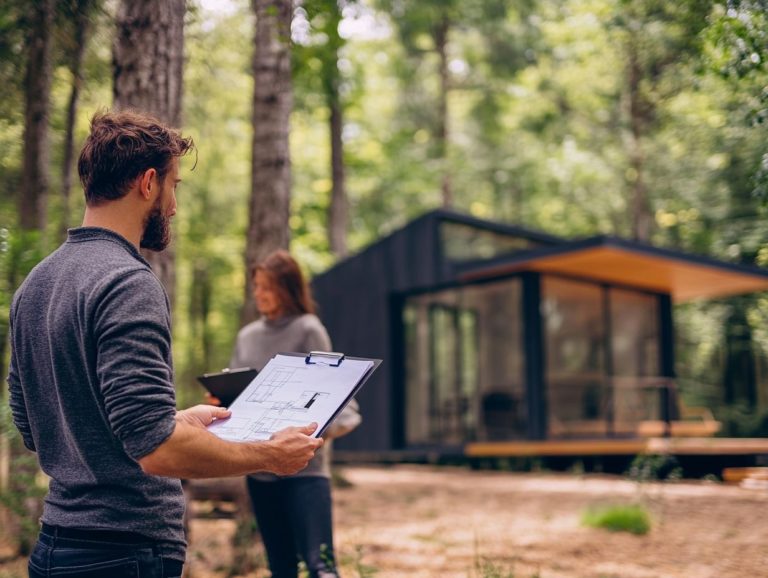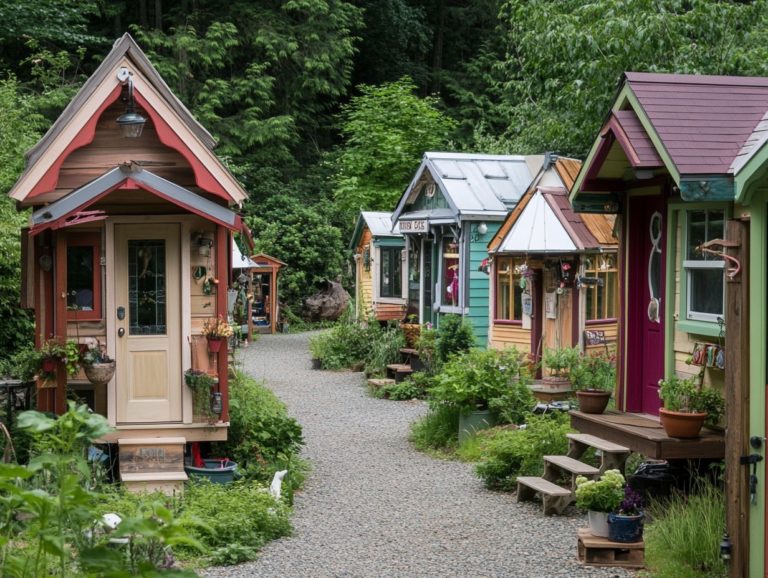Can I Move My Tiny House Easily?
Tiny houses have truly captured the imagination if you re seeking a simpler, more sustainable lifestyle. However, when the time comes to relocate, you may find that the process is more intricate than you initially anticipated.
This article delves into every aspect of moving a tiny house, from what exactly defines these compact dwellings to the essential factors you need to consider before you hit the road.
It covers practical moving methods, preparation tips, and the challenges you might encounter along the way. Whether you re already a seasoned tiny house owner or contemplating the switch, this guide equips you with the knowledge necessary for a successful move.
Contents [hide]
- Key Takeaways:
- Understanding Tiny Houses
- Factors to Consider Before Moving a Tiny House
- Methods of Moving a Tiny Home
- Preparing Your Tiny House for a Move
- Challenges of Moving a Tiny House
- Tips for a Successful Move
- Frequently Asked Questions
- How do I Move My Tiny House?
- Do I Need a Permit to Move My Tiny House?
- How Long Does it Take to Move a Tiny House?
- Can I Move My Tiny House By Myself?
- What Should I Consider Before Moving My Tiny House?
Key Takeaways:
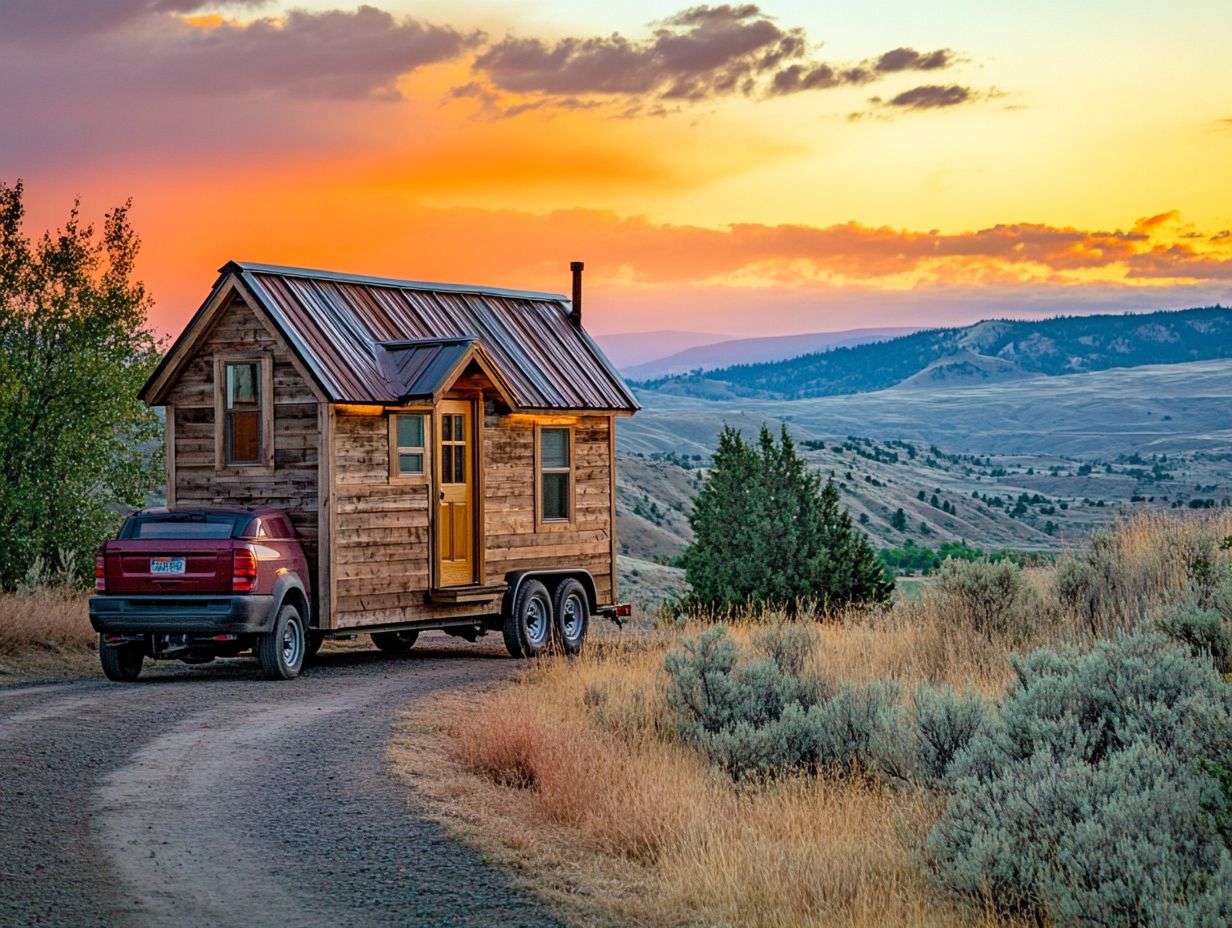
- Moving a tiny house requires careful consideration of size, weight, and legal restrictions.
- Towing, trucking, and professional moving services can help with the move.
- Preparation is key for a successful move secure loose items and communicate with movers.
Understanding Tiny Houses
Understanding tiny houses invites you to explore the essence of minimalist living, where simplicity and efficiency reign supreme. These compact homes, frequently designed on wheels for mobility, offer a distinctive housing solution that champions being eco-friendly and saving money.
As the desire to downsize grows, the tiny home movement has gained significant traction. Innovative designs optimize both space and functionality.
Whether you opt for a stationary tiny house or one crafted from a shipping container, these homes redefine traditional concepts of homeownership and space utilization, inviting you to rethink what it truly means to live well.
What is a Tiny House?
A tiny house is a compact dwelling, typically under 400 square feet, designed to maximize your living space while minimizing both environmental impact and financial burden.
This innovative living solution is crafted with efficiency in mind, featuring multifunctional furniture and smart storage ideas that perfectly align with a minimalist lifestyle. Many people find joy in downsizing, discovering freedom from big mortgages and high energy bills.
Unlike conventional homes that often boast expansive layouts, tiny homes encourage a more intentional way of living, where every square foot is put to good use. This concept goes beyond fixed structures; if you’re considering mobile homes, the DIY tiny home transport movement helps you build and move your own portable tiny house, adding a sense of adventure to sustainable living.
Factors to Consider Before Moving a Tiny House
Before you embark on the journey of relocating a tiny home, it s essential to consider a myriad of factors, including permits and licensing, towing requirements, and the specific regulations governing tiny home transport.
Moving a tiny house brings its own set of unique challenges, from deciphering local regulations to accurately estimating the costs involved. Thorough research is crucial for a seamless transition, as tiny homes often necessitate specific permits based on their location and dimensions.
Make sure you have the right towing vehicle generally a heavy-duty pickup truck to safely transport your mobile dwelling.
Finally, we invite you to share your tiny house journey or contact us for more tips on making your move a success!
Size and Weight Restrictions
Understanding size and weight restrictions is crucial when planning to tow a tiny home. These factors determine the type of vehicle you’ll need and the routes available to you.
Each tiny home design presents its own specifications, typically ranging from 8.5 feet in width to a gross vehicle weight rating (GVWR) the maximum weight a vehicle can safely carry that rarely exceeds 10,000 pounds. Adhering to these limitations is essential for legal compliance and ensuring safe and reliable transportation.
Choosing the right towing vehicle is crucial for your adventure! A heavy-duty pickup truck typically offers the necessary power and stability to handle these weights effectively, enabling smoother journeys while significantly reducing the risk of accidents or breakdowns.
By grasping these weight and size constraints, you can make informed decisions that greatly influence your travel plans, including selecting routes that accommodate your specific trailer dimensions.
Legal Requirements
Understanding the legal requirements for moving a tiny home can be challenging, as it often involves securing various permits and licenses from entities like the Department of Transportation (DOT) and your local DMV.
Beyond just obtaining the necessary towing permits, it s crucial to grasp the specific zoning laws in your municipality, as these regulations dictate where your tiny home can be parked or lived in temporarily. Adhering to safety regulations is non-negotiable; you must pay attention to weight limits for both the vehicle and the tiny home s structure to avoid any unpleasant penalties.
To ensure you cover all bases, consulting local regulations is key. Engaging a legal advisor who specializes in tiny home laws can illuminate the path ahead, ensuring you meet every requirement from insurance obligations to road safety laws.
Methods of Moving a Tiny Home
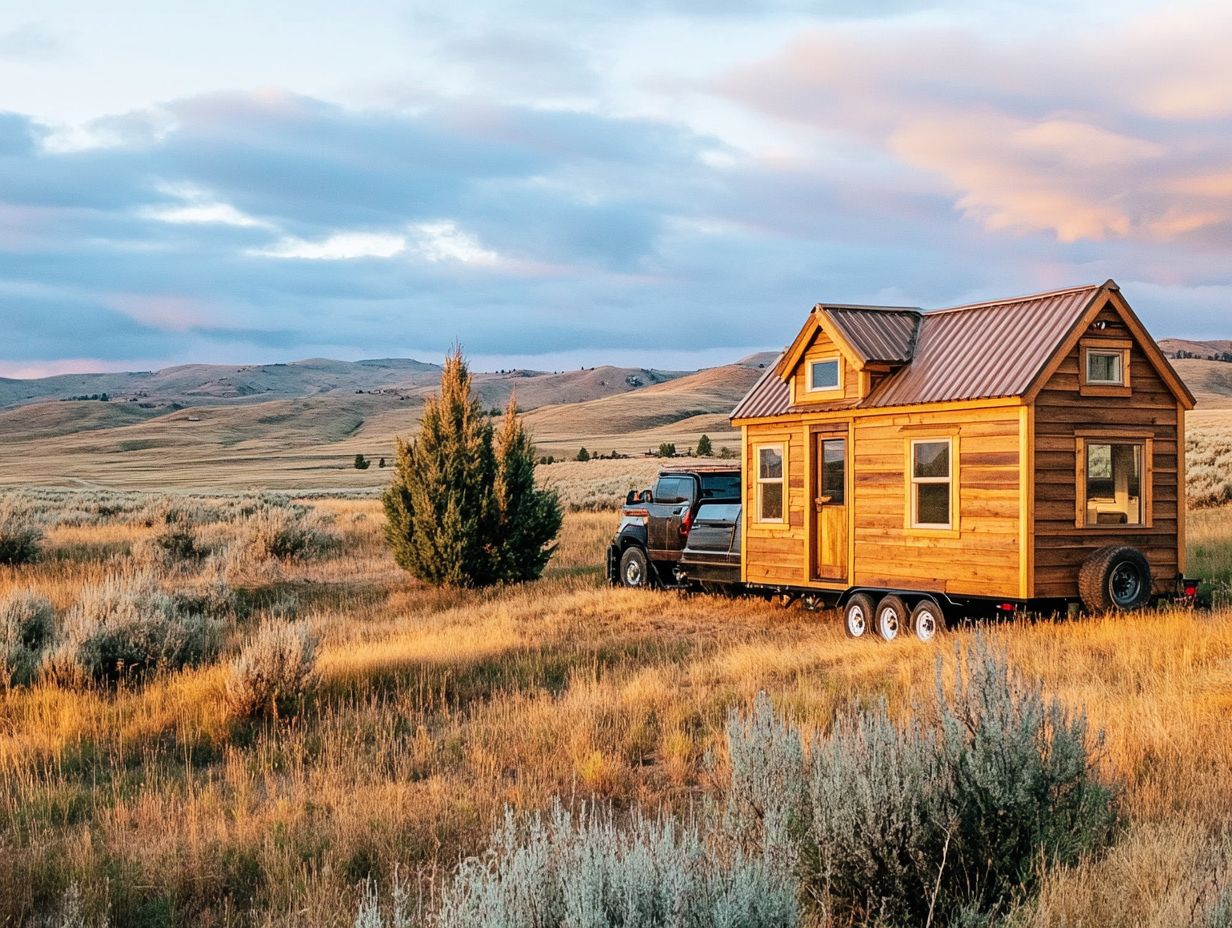
When it comes to moving a tiny home, you have various methods at your disposal, each offering unique advantages and considerations. The choice you make will often hinge on your comfort level, budget, and the specific needs of your tiny home.
For short distances, you might opt for towing your tiny home with a heavy-duty pickup truck. For longer journeys especially those that cross oceans flatbed transport may be the more suitable option.
Understanding these methods is crucial to ensuring a seamless transition.
Towing
Towing a tiny home demands specific equipment and a solid understanding to ensure safe transportation. You ll need a reliable heavy-duty pickup truck and must adhere to the guidelines for moving.
Beyond having the right vehicle, it s essential to equip the tiny home with a well-fitted hitch and safety chains for added security during transit. Familiarizing yourself with weight limits and local regulations is imperative; this knowledge helps avoid potential fines or accidents. Never skip safety measures performing a thorough inspection of both your tow vehicle and the trailer before you hit the road is essential.
You should also consider weather conditions, as high winds or heavy rain can greatly affect steering and braking. Being cautious and prepared can truly make all the difference when towing your tiny home to its new destination.
Trucking
Utilizing trucking services for transporting tiny homes is a smart choice, particularly when you factor in moving costs and the logistics of handling mobile homes.
Navigating the intricacies of relocating a tiny home might feel overwhelming, but professional trucking services simplify the process remarkably. When you explore flatbed transport options, you’ll discover that these specialized vehicles are expertly designed to securely carry the unique dimensions and weight of tiny homes, ensuring safe transit. It’s also essential to be aware of the legalities of moving a tiny house to avoid any complications during the move.
Understanding the costs associated with this service is essential, as elements like distance, permits, and the structure s weight can all impact pricing. By carefully evaluating these factors, you can make informed decisions that enhance your relocation experience while keeping unexpected expenses at bay.
For more information on moving a tiny home, consider researching further or consulting an expert. Your adventure awaits!
Professional Moving Services
Engaging professional moving services can transform your experience of transporting tiny homes. Start by securing your items and disconnecting utilities for a hassle-free move!
These experts possess specific expertise about the unique requirements involved in tiny home transport. They ensure that every detail of your move is managed with precision, including navigating local regulations, securing necessary permits, and using the right equipment to protect your home during the journey. If you’re considering this lifestyle, you might also wonder, can I rent out my tiny house?
When relocating to distant locations, these services significantly alleviate the stress tied to logistics. Their expertise also boosts efficiency, allowing you to focus on settling into your new environment and enjoying the transition.
Preparing Your Tiny House for a Move
Preparing your tiny home for a move is essential for a smooth transition. This means taking the necessary steps to secure movable items and disconnect utilities before transport.
Thoughtful preparation minimizes moving costs and prevents damage during transit. By dedicating time to organize and secure your belongings, you ll protect your appliances and furniture, ensuring they are ready for the journey ahead.
This careful planning keeps your tiny home safe during the move.
Securing Loose Items
Securing loose items in your tiny home is crucial for preventing damage during transport. This process requires practical strategies and attention to detail.
Utilizing robust packing materials like bubble wrap, foam inserts, or blankets can greatly reduce the risk of damage during DIY tiny home transport. Labeling techniques help you easily identify fragile items, while straps or ropes keep everything in place during transit.
It s also essential to ensure that utilities such as gas, water, and electricity are properly disconnected. Turning off valves and unplugging appliances enhances safety and guards against potential leaks or electrical hazards.
By following these best practices, you can transform the often stressful task of moving into a seamless and organized experience.
Disconnecting Utilities
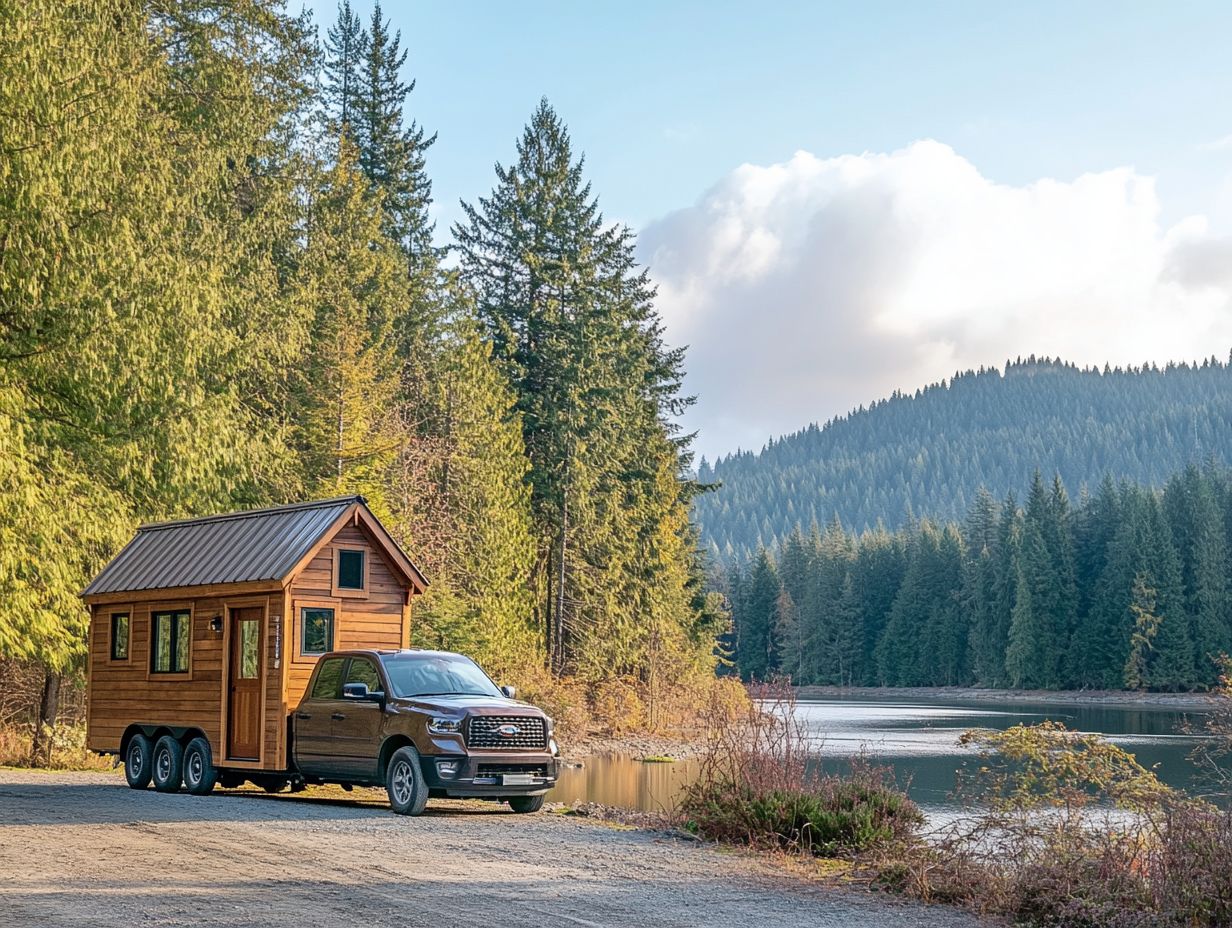
Disconnecting utilities before your move is an essential step for tiny homeowners. This helps you avoid complications and extra costs related to utility transfers.
Properly disconnecting services like water, electricity, and gas paves the way for a smoother transition and ensures your safety during relocation. Reach out to your utility providers in advance to schedule disconnections and facilitate final readings.
Securing your appliances by turning off gas lines, draining water from heaters, and unplugging electrical items prevents potential damage and boosts safety. Following these steps ensures your move is efficient and free from mishaps.
Challenges of Moving a Tiny House
Moving a tiny home presents a distinct array of challenges, from winding roads to unexpected obstacles. You ll also need to consider how varying weather conditions can influence the transport process.
Such hurdles demand meticulous planning and foresight for a smooth transition. Evaluate your route for potential impediments like low bridges or narrow streets, and remain alert to any unfavorable weather that could complicate relocating your tiny abode.
Navigating Roads and Obstacles
Navigating roads and obstacles is crucial when moving a tiny home. Careful route planning helps you avoid potential hazards.
The complexities of transportation can present unique challenges. Homeowners must remain alert to low bridges, narrow streets, and limited access points that might hinder progress.
By prioritizing a comprehensive route map, you can prevent delays and reduce the risks associated with unexpected encounters along the journey.
As you prepare for this adventure, utilizing mapping tools specifically designed for oversized vehicles can be invaluable. These tools are helpful for vehicles larger than usual, like tiny homes, and will highlight potential pitfalls while suggesting alternate paths for a smoother experience.
Familiarizing yourself with local regulations on height restrictions and road width facilitates safe navigation and boosts your confidence throughout the move.
Weather Conditions
Weather conditions can significantly impact your tiny home move. This makes it essential to plan carefully to address potential challenges.
Consider, for instance, that rainy weather can create slippery surfaces, heightening the risk of accidents. Scheduling your move during drier periods or investing in protective gear can enhance safety.
Similarly, snow can obstruct pathways and reduce visibility, complicating navigation for everyone involved. To mitigate these issues, it’s prudent to consult weather forecasts in advance and develop contingency plans.
Being flexible with your moving dates is crucial. Opting to postpone your move when inclement weather looms can save you from costly damages to both your tiny home and personal belongings. This ensures a smooth and safe journey ahead!
Tips for a Successful Move
To ensure a seamless transition for your tiny home, it s crucial to plan thoroughly and maintain clear communication with your movers throughout the process. A well-structured plan will streamline logistics and allow you to anticipate potential challenges.
By articulating your needs and expectations clearly, you ensure that everyone involved is aligned, paving the way for a smoother and more efficient moving experience.
Planning Ahead
Planning ahead is essential for executing a successful move to your tiny home. This enables you to effectively manage costs and adhere to moving guidelines.
When embarking on this journey, developing a detailed timeline is crucial to ensure that every step from decluttering to the final transport is meticulously organized. Start by setting specific deadlines for key tasks, like packing and securing your new location; this will help keep you on track.
Budgeting is another vital component. Consider all potential expenses, including transportation fees, utility setup, and any necessary moving equipment. Choosing the right moving method whether it s hiring professionals or renting a trailer can significantly impact your time and finances.
By focusing on these actionable steps, you can achieve a smoother transition, ultimately leading to a more enjoyable living experience.
Communication with Movers
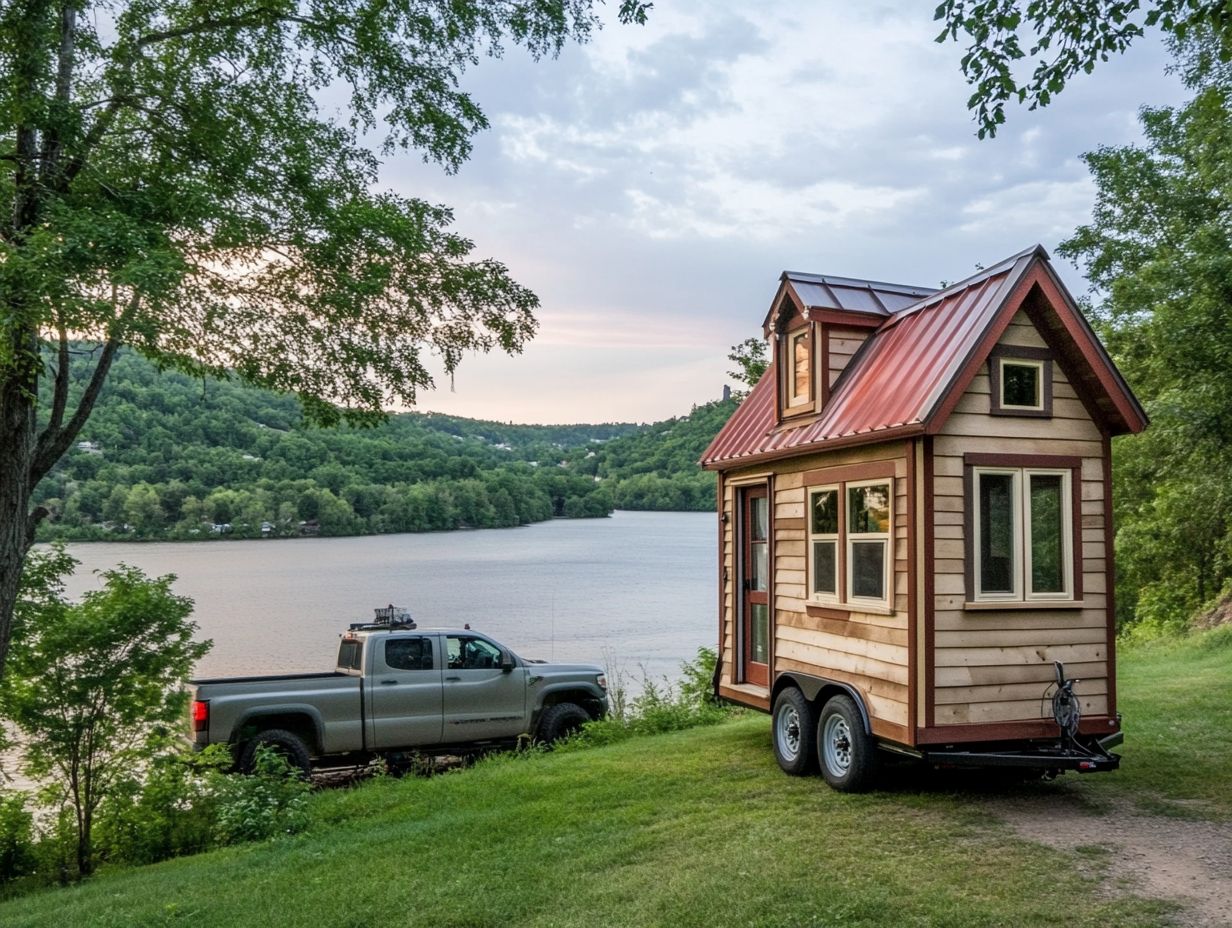
Effective communication with your movers is essential for the successful transport of your tiny home. It fosters collaboration and a clear understanding of your specific needs.
By establishing clear timelines and outlining precise expectations, you create the foundation for a smoother process. Discussing any unique requirements like specialized equipment or necessary permits for transporting your tiny home can truly make all the difference.
Engaging in open dialogue encourages your moving service to prepare thoroughly, allowing them to address any particular concerns you may have. This approach paves the way for timely updates regarding scheduling, potential delays, or changes in logistics, ensuring everyone remains aligned.
Ultimately, proactive communication is key to alleviating stress and facilitating a seamless transition to your new location.
Frequently Asked Questions
Can I Move My Tiny House Easily?
Yes, it is possible to move a tiny house easily. Tiny houses are designed to be lightweight and portable, making them easier to move than traditional homes.
Start planning your tiny home move today!
How do I Move My Tiny House?
The most common way to move a tiny house is by using a trailer. You build the tiny house onto the trailer and then tow it to a new location.
Do I Need a Permit to Move My Tiny House?
Wondering if you need a permit? Check your local rules! It s crucial to ensure everything is legal before moving. In some areas, a permit is required to move any building, including a tiny house.
How Long Does it Take to Move a Tiny House?
The time it takes to move a tiny house can vary. It depends on the distance and method of transportation. It can take anywhere from a few hours to a full day.
Can I Move My Tiny House By Myself?
Moving a tiny house by yourself is not recommended. It can be complex and potentially dangerous. It s best to hire a professional or have a team of experienced individuals help with the move.
What Should I Consider Before Moving My Tiny House?
Before moving, consider the route you will take. Look out for any potential obstacles or challenges. Also, think about the cost of transportation. Don t forget to contact your insurance provider right away to ensure your tiny house is covered during the move!
Ready to move your tiny house? Start planning your adventure today!



